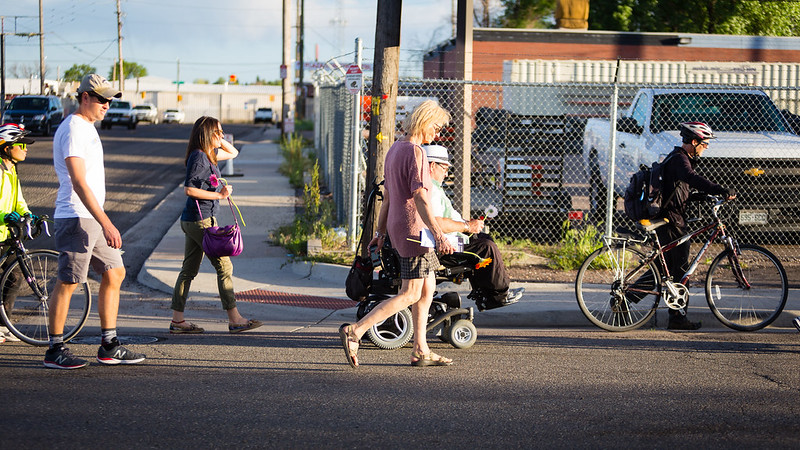Commentary: Scooters, bikes and pedestrians. Can they coexist?

Jaime Lewis is the Transportation Advocate with the Colorado Cross Disability Coalition. Between 1998 – 2001 Jaime served as a city council person and mayor for the city of Salida, CO.
Soon Denver will have two contractors that will be permitted to provide scooters and shared bike systems to our streets. In total 3,000 scooters and 600 bikes will be allowed on our streets and sidewalks. The Colorado Cross Disability Coalition, a Statewide Coalition that supports the rights and freedoms for people with disabilities, encourages the use of multi-modal devices to help keep our community active and healthy.
However, we are concerned about some users who ignore or who are not aware of the rules concerning the operation of scooters and bikes on sidewalks. According to the proposed agreements “Electric scooters may only be ridden where bicycles are permitted to ride, and are not permitted to be ridden on sidewalks unless actively parking or disembarking”
Has the city placed reasonable safeguards and rules in place to protect both the rider and pedestrians who use the sidewalk? Denver’s Dockless Mobility Vehicle Pilot Program Survey results indicated that 55% of online survey respondents reported that they had an interaction with a scooter rider where they had been hit or almost hit. Of those, 82% reported they had been walking during this interaction.
There is some language in the proposed agreements about building new dedicated parking for bikes and scooters to aid with right of way issues. One of the more prominent problems during the introduction of scooters during 2018 and 2019 was users leaving their scooters in the middle of sidewalk or on private property. A tool to help avoid this behavior is to charge users an extra fee if they do not leave their scooter in a designated area/scooter rack or to temporarily suspend access to bikes and scooters if they are found to be in violation of the user agreement.
Without signage, education, enforcement, and a fully connected bike/scooter road network, the use of scooters and a bike-share program of this size will fail. We expect that the city will provide these necessary tools that will help pedestrians and scooter/bike users to co-exist. The preferred method would be to complete the bike/scooter network. This option provides spaces for the vehicles while maintaining safe and peaceful space for pedestrians on sidewalks.
We encourage the city to continue expanding the bike/scooter and network, fix and expand the sidewalk network, and ask them to monitor the implementation of the two contractors in case of a sudden rise in conflicts between pedestrians and mobility device users. Signage on the sidewalk should indicate to scooter users that the operation of the device is prohibited and should also provide a phone number or email address for pedestrians to report incidents.


